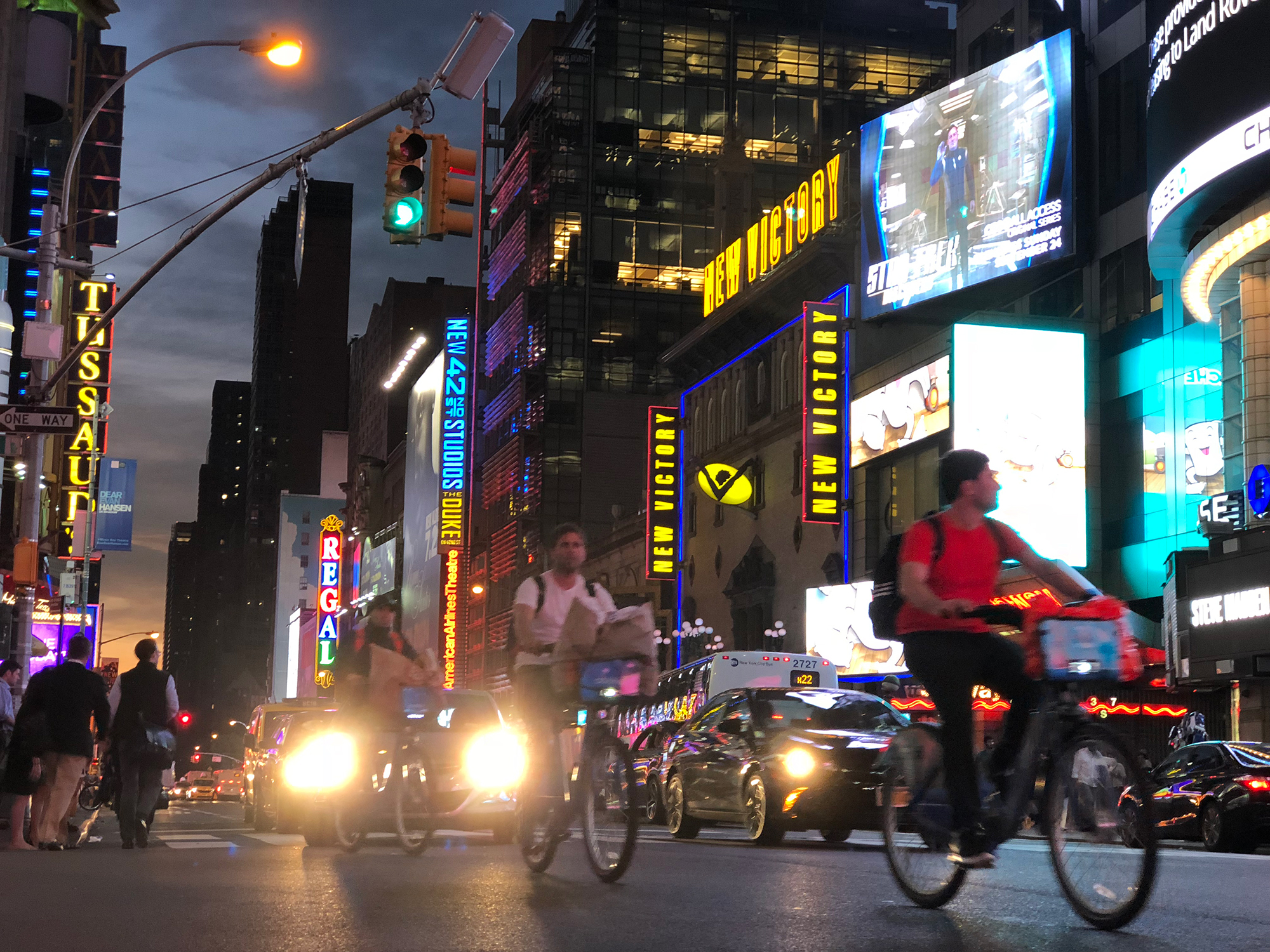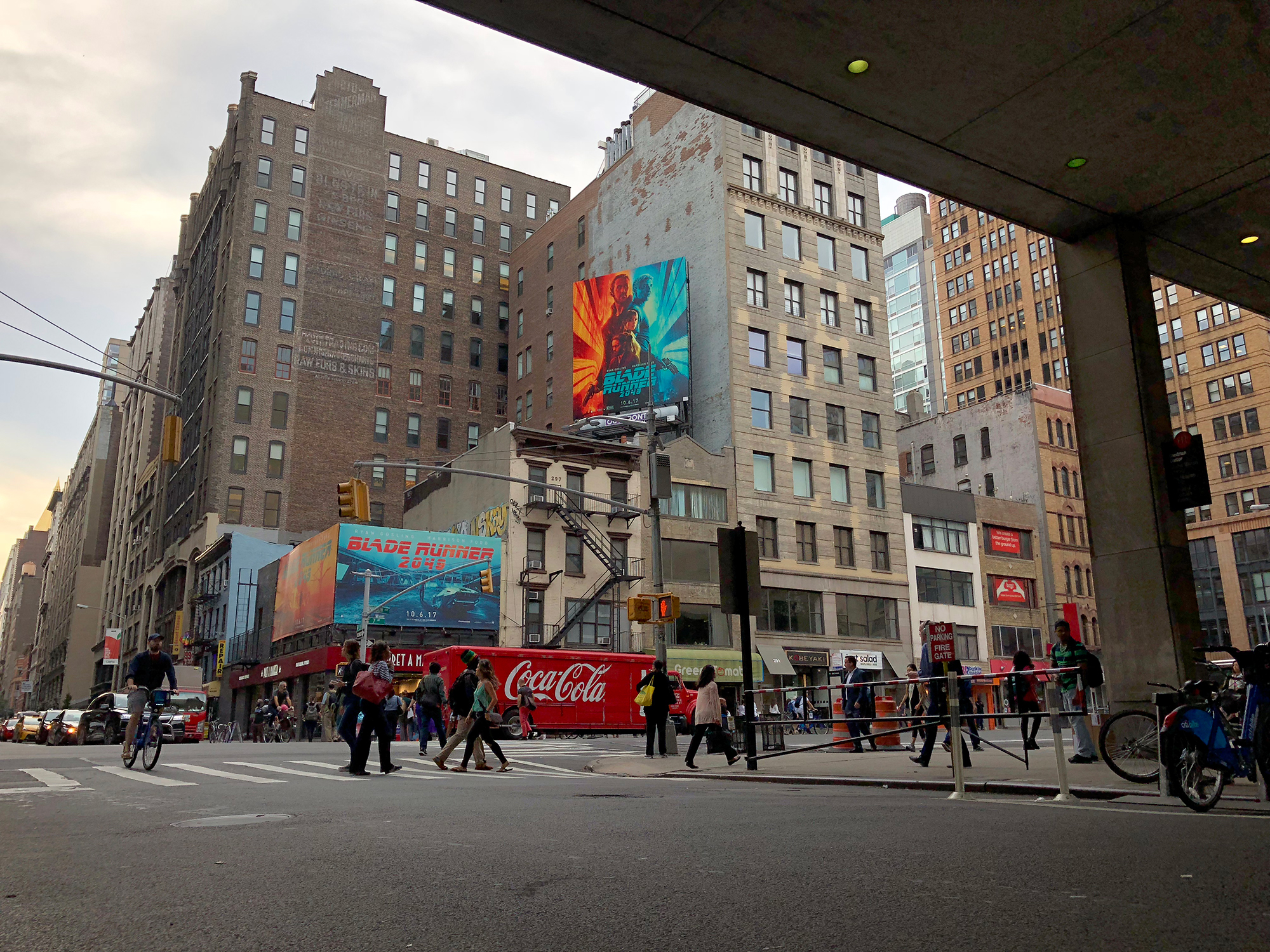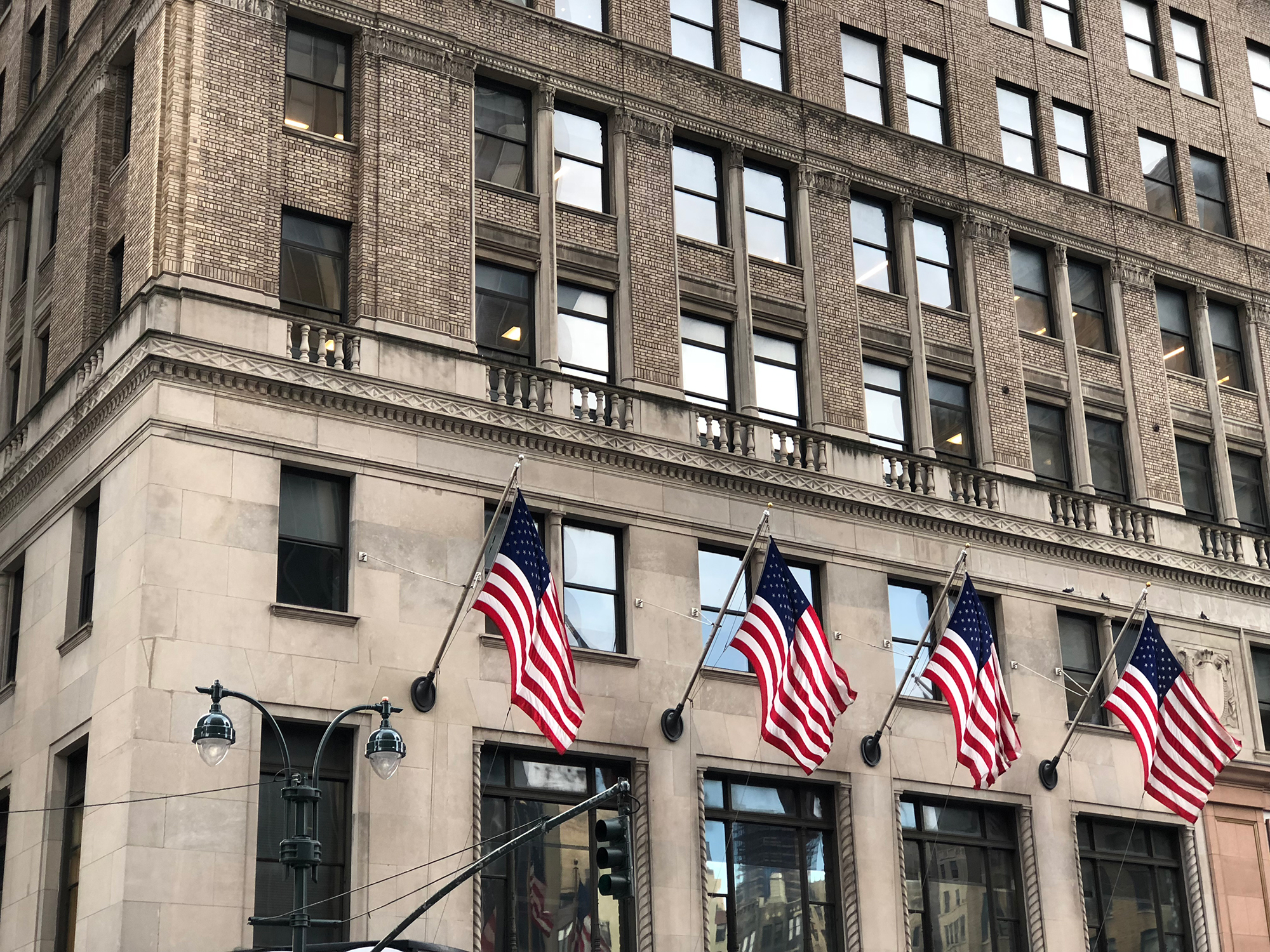“The iPhone 8 Plus’ updates don’t warrant a full number bump, but they’re welcome improvements that make it another great iPhone.”
- Stellar performance
- Great camera, fun Portrait Mode features
- Wireless charging works well
- Great display
- Daylong battery
- Expensive
- Boring, dated front design
- No headphone jack
The name of one phone is rolling off everyone’s tongues: iPhone X. The X (pronounced “ten”) is Apple’s all new design for the iPhone, with an edge-to-edge screen, fancy facial recognition features, and an eye-widening price tag.
If the $1,000 asking price is too much for you, and you can’t wait until November, there’s the traditional-looking iPhone 8 and 8 Plus. These new iPhones carry many of the same specifications as the iPhone X, but are they worth the upgrade? In our iPhone 8 review and our iPhone 8 Plus review, we find the phones tick all the boxes but are minor bumps over last year’s models.
Pretty colors, but a dated design
Put the iPhone 8 Plus next to the iPhone 7 Plus and you’ll hardly notice a difference. The 8 Plus is marginally thicker and longer, but it should still be able to fit in any 7 Plus case. It carries the same design theme from the iPhone 6, but the major difference is a new glass back, which allows it to support wireless charging technology. Apple said it’s the most durable glass ever in a smartphone, with a “50 percent deeper strengthening layer,” but that doesn’t necessarily mean it will survive a drop on concrete. You’d be wise to protect it with a case.
The other differences are minor. There are fewer color options now: Gold, silver, and space gray (goodbye rose gold and jet black). The silver and space gray models are similar to the silver and black iPhone 7 Plus devices, but the gold is slightly more champagne-gold. The rear has a creamy, pinkish hue that we like, and the “aerospace-grade” aluminum sides are a darker gold. It’s undoubtedly attractive, and elegant.
Adding to this elegance are the antenna bands, which have been moved to the sides, rather than visibly sticking out at the top and bottom. It makes the rear look more minimal than ever, as there’s just the dual camera module and flash at the top, along with the Apple and iPhone logo. Even the iconic “Designed by Apple in California” line has been stripped.
Sadly, the camera still juts out of the frame. Most flagship Android phones have evolved past this camera bump; why can’t Apple do the same? Even the iPhone X has this annoyance. Cameras look better when they’re flush with the rear, and it gives us more peace of mind when placing the phone down on any flat surface.
The iPhone 8 Plus is noticeably heavier than the iPhone 7 Plus, but not in a bad way. The added heft makes it feel as though the phone won’t slide out of our hands. The glass back is smooth and cool to the touch, but you won’t feel much of a difference if you’re coming from a Jet Black iPhone. It’s still a fingerprint magnet, but at least they’re less visible on the gold and silver colors.
It’s undoubtedly attractive, and elegant.
As usual, you’ll find the power button on the right edge, with the volume rocker and mute switch on the left. The force-sensitive home button sits on the front (it may be the last iPhone with a home button), and you’ll find a Lightning port on the bottom with the speakers. There’s no headphone jack again, sadly, but there is a Lightning to 3.5mm headphone jack adapter in the box. The iPhone 8 Plus is once again IP67 dust- and water-resistant, so you can take it underwater up to 1 meter for 30 minutes. We’d have liked to see an improved IP68 water resistance, like Samsung’s smartphones, but IP67 should be more than enough for most situations.
As much as we admire the rear, flip the iPhone 8 Plus over and it feels like we’ve traveled back in time to 2015. The iPhone X is Apple’s edge-to-edge “bezel-less” competitor to phones like Samsung’s Galaxy S8 or Note 8, and the LG V30. The iPhone 8 and 8 Plus? Not so much. The screen is flanked by chunky edges that make the phone’s design look dated and unpleasant.
The bezel-less trend isn’t just about aesthetics. Shrinking the edges around the screen offers more display in a smaller package. The iPhone X is a good example. It’s just barely bigger than the 4.7-inch iPhone 8, but it boasts a 5.8-inch display. You’re getting a bigger screen than the bulky 5.5-inch iPhone 8 Plus, all in a smaller frame.
The iPhone 8 Plus is unwieldy, and it’s near impossible to reach the top of the phone. Thankfully, you can lightly tap the home button twice to lower the interface so it’s reachable. It’s a shame, though, that Apple is forcing people to shell out more money for a more relevant and functional design.
At the end of the day, the iPhone 8 Plus is still an iPhone. If you don’t care for the features or price of the iPhone X, you know exactly what you’re getting with the iPhone 8 Plus because it’s incredibly similar to the past few iPhones. Just know that with the X, you’re paying a premium for Apple’s next-gen design.
Fantastic True Tone display, louder speakers
The iPhone 8 Plus’ display isn’t any different from the iPhone 7 Plus. It’s a 5.5-inch LCD IPS screen with a 1,920 × 1,080-pixel resolution (401 pixels-per-inch). It can get incredibly bright for easy viewing in direct sunlight; and as always, the colors are accurate and visually pop off the screen. Looking at it from the side, the display looks like a sheet of paper, because it doesn’t catch as much glare as other smartphones. It’s absolutely a joy to stare at and use.
What is new, however, is True Tone technology. A feature that’s trickled down from the iPad Pro, True Tone automatically changes the iPhone’s display “based on ambient lighting conditions to make colors appear consistent in different environments.” So for example, in incandescent lighting where everything has a yellow hue, the display will shift from slightly cool to a warmer tone. It can be tough to notice, but it works like a charm, and it makes it easier for your eyes to adapt to the screen.
The stereo speakers have also improved. They’re decently louder than the iPhone 7 Plus (about 25 percent to be exact), but they sound richer as well. We listened to Fiona Apple’s “Why Try To Change Me Now,” and on the iPhone 7 Plus it sounded like I was playing an MP3 file, but on the iPhone 8 Plus it felt as though she could have been in the same room.
Again, these are minor improvements over last year’s phone, but the display is now a little more adaptive to your environment, and you’ll have a slightly better listening experience when playing music with the speakers.
Unrivaled performance, AR for the masses
One category where Apple continues to blow away the competition is performance. Apple’s processors outperform anything from Qualcomm or Samsung, and the same rings true for the A11 Bionic in the 8, 8 Plus, and X.
In official Geekbench scores, the six-core A11 Bionic hit a whopping 4,198 on its single-core score, and 9,983 on multicore. In our test, it scored similarly: 4,238 and 10,453 respectively. For comparison, our Galaxy S8 scored 1,762 single core, and 5,723 multi core. In our own test with the AnTuTu benchmarking tool, the iPhone 8 Plus scored 222,462. Our S8’s AnTuTu score is 155,253, and HTC’s U11 scored 175,748. It’s fair to say the iPhone is more powerful.
Apple’s processors outperform anything from Qualcomm or Samsung, and the same rings true for the A11 Bionic.
But benchmarks aside, it’ll be tough to spot the performance improvement from the iPhone 7 Plus. The iOS operating system moves just as fluid, apps open incredibly quickly, and scrolling feels buttery smooth. Apple said this performance bump will be handy for machine learning and artificial intelligence, but one way to perhaps see the A11 Bionic’s true power is through augmented reality.
Apple has brought AR to the masses, not with the iPhone 8, but with iOS 11. ARKit is the new framework developers can use to provide augmented features with your iPhone camera. For example, one of our favorite ARKit apps, Ikea Place, lets you drop Ikea furniture into your house to see how it would fit in with the rest of your furniture, and if it can actually fit in the room. An app called AR MeasureKit can impressively find the measurement of objects you point the iPhone camera towards (goodbye rulers).
Gaming is where the A11 shines, and credit is due to the Apple-designed graphics processing unit. We played augmented reality games like Euclidean Lands, Conduct AR!, and The Machines, and the graphics look great. We never ran into any performance issues whatsoever, but the phone did start to get quite hot.
Keep in mind, though, that you don’t need an iPhone 8 or 8 Plus to check out these AR apps and games. We’ve tried a few of the same apps on the iPhone 7 Plus, and they ran fine with with similar performance. You just need to install iOS 11, which is available for the iPhone 5S and above.
Bluetooth 5 is on board, which means you get much improved range and faster data transfer when connected to wireless devices like headphones.
iOS 11
Like the iPhone 8 Plus, iOS 11 isn’t a major upgrade to Apple’s mobile operating system. That doesn’t mean there aren’t important changes — the update streamlines the iOS experience further than iOS 10, and even adds more customization options.
First off, there’s a new Control Center. It’s all available on one screen now when you swipe up from the bottom, and you can tweak what you want to see here. Want a quick toggle to Low Power Mode? Done. Want to turn off True Tone display? Use 3D Touch on the brightness slider and toggle it off. We’d like to see even more options available, but this is a great start.
The Notification Center is also a little different. Now when you pull down your notifications, you’ll be greeted with the lock screen. You can swipe to the left to access the camera, and swipe to the right to access to Today widgets. Notifications are separated by day, so you have to swipe to the next day’s notifications if you want to see the “X” icon to clear everything.
Photos and videos are now captured in new formats High Efficiency Image Format (HEIF), and High Efficiency Video Coding (HEVC). These formats basically offer the same if not better quality than JPEG, but at a much reduced file size — helpful if you’re planning to take a lot of 4K video.
There’s also a redesigned App Store, which is one of our favorite improvements to iOS. It’s no longer a mindless marketplace with difficult-to-find apps. It now follows a magazine-style layout, with featured stories on apps, tips and tricks, and a daily app of the day to keep you coming back.
A lot of smaller additions also make iOS 11 more pleasant to use, such as a revamped Notes app, a new Files app to manage all your documents, and a Do Not Disturb mode that automatically kicks in when you’re driving. Check out our iOS 11 review to learn more in depth.
Camera and Portrait Lighting
The iPhone 8 Plus carries over nearly the same camera specifications as the iPhone 7 Plus, which first introduced Apple’s dual-camera system. It has two 12-megapixel cameras, one wide-angle lens with optical image stabilization (f/1.8 aperture), and one telephoto lens (f/2.8 aperture).
The telephoto lens is used for Portrait Mode, which adds a blur or “bokeh” effect behind a subject, but what the iPhone 8 Plus will have over its predecessor is a new mode called Portrait Lighting.
Before diving into Portrait Lighting, let’s talk about the regular camera experience. There’s now a permanently on HDR mode, which drastically changes the look of photos when compared to the iPhone 7 Plus. Ever have a photo where the sky is too white and overexposed, or the subject is far too dark but the sky looks normal? HDR fixes that by taking multiple images and compiling them together to get a perfectly exposed photo. These photos are incredibly detailed, and the color accuracy is impressive, though a tad more saturated than the iPhone 7 Plus — it still looks great. Photos are captured instantly because there’s almost no shutter lag, which helps a lot with moving subjects.
Low-light seems to have improved with less grain, but we’ll have to do more testing to be sure. There’s 2x optical zoom available, and it’s just as useful as before. We’re happy to have the option to zoom into a photo without sacrificing image quality, but we’re still surprised at how much detail is captured.
Apple said regular Portrait Mode is also improved, and the results are telling. The 8 Plus does a better job of detecting the edges of subjects, and the blur effect looks even more natural than before. It’s still not great in low-light environments, because the photos are incredibly grainy.
Portrait Lighting expands upon Portait Mode to offer five different types of lighting effects on subjects: Natural Light, Studio Light, Contour Light, Stage Light, and Stage Light Mono. These aren’t filters, but Apple said the iPhone 8 Plus’ camera uses facial landmarking and depth maps to figure out where to perfectly add these lighting effects. It’s a fun feature we can see being popular, especially on Instagram, but there are still some kinks that need to be worked out.
- 1. Studio Light
- 4. Dramatic Light
The Stage Light Mono, for example, takes a photo in black and white against a deep black background. It often struggled with accurately catching some strands of hair (it would just look cut off), and it also didn’t work as well on people wearing glasses. You still need to put some thought into the shot to get a good result, but it’s a lot of fun to use and it makes us want to explore the camera further.
Photos are incredibly detailed, and the color accuracy is impressive.
Do be warned, though, that like Portrait Mode, Portrait Lighting doesn’t work that well in low-light. The photos come out super grainy, and the effects don’t look right at all.
Our favorite Portrait Lighting setting is Studio Light, which brightens the subject dramatically for a cool effect. Portrait Lighting is still in beta, but it will likely officially launch sometime in October or November — similar to how Portrait Mode launched on the iPhone 7 Plus.
Overall, the camera update isn’t dramatic, but the always-on HDR and Portrait features are welcome improvements.
On the video side of things, you can shoot in varying types of 4K — 24 frames-per-second for a cinematic look, 30 fps, and 60 fps. What we like more, however, is how you can now shoot slow-motion videos at 240 fps in 1080p resolution. It’s a lot of fun to use, and the end result is finally Full HD.
Battery and wireless charging
The all-glass design of the iPhone 8 Plus means it’s now capable of wirelessly charging. It’s not “true” wireless charging — the charging pad you plop your iPhone on still needs to be connected to an outlet, but it eliminates the need to fish around for a cable in the dark before bed. Apple uses the Qi wireless standard; it’s an open standard that has been around for some time. Android phones have been using this standard for a while, and the good news is that means you have plenty of wireless charging pads to choose from.
Apple could have, and likely should have, added it some time ago.
You should know that the iPhone 8 Plus won’t wirelessly charge as fast as it can at launch. It can take in 5 watts at launch, but Apple will issue a software update later in the fall to allow the phone to take 7.5 watts. Mophie and Belkin have specifically worked with Apple to make sure their wireless chargers can deliver 7.5 watts as efficiently as possible.
Wireless charging is convenient and easy to use, just as it is in all the Android phones that support it. Apple could have, and likely should have, added it some time ago.
The iPhone 8 Plus’ battery life is on par with many other flagship smartphones, offering about a day’s worth of use. We frequently returned home with 40 percent battery left around 6:30 p.m. with heavy use — that includes taking photos, watching videos, browsing social media and the web, and streaming music. Charging speed isn’t as fast as we’d like — it took an hour and a half to go from 36 percent to 100 percent. The iPhone 8 Plus is capable of fast charging, but not with the cable in the box. You’ll need a USB Type-C to Lightning cable to charge fast, and Apple claims it will take 30 minutes to get the iPhone up to 50 percent from zero. It’s baffling why this cable is not included.
Warranty, price, and availability
Apple offers a standard one-year warranty, starting at the date of purchase, that covers your device from manufacturing defects. It doesn’t cover liquid or accidental damage. For that, you can purchase $150 AppleCare+ insurance, which adds two years of technical support and accidental damage coverage.
The iPhone 8 Plus comes in two storage models: 64GB and 256GB. The former will set you back $800, and the latter will cost $950. It’s available now at all major U.S. carriers, as well as the Apple Store.
Our Take
The iPhone 8 Plus should really be called the iPhone 7S Plus. Its updates don’t warrant a full number bump, but they’re welcome improvements that make the 8 Plus another great iPhone.
Is there a better alternative?
Yes. For iOS users, your next best bet is the upcoming iPhone X. It beats out the iPhone 8 Plus in most specifications and features, and it also has Apple’s new design language. It looks too good to ignore for any iPhone enthusiast.
If you don’t care for the special facial tracking features, you won’t be disappointed with the iPhone 8 Plus — though maybe a little sad the design hasn’t changed.
There are far more options if you’re willing to jump to Android. The two most notable are the LG V30 and the Samsung Galaxy Note 8. Both feature bezel-less designs, offer great performance, and have unique camera experiences.
How long will it last?
Apple is known to support its products for a long time, so we expect the iPhone 8 Plus to last four to five years, if not more. You should definitely get a case to protect the phone from accidental drops, but the waterproofing protects it from liquids. Expect to continue getting software updates for a similar length of time.
Should you buy it?
Yes. If you don’t want to spend $1,000 on the iPhone X, the iPhone 8 Plus is the next best thing.


























